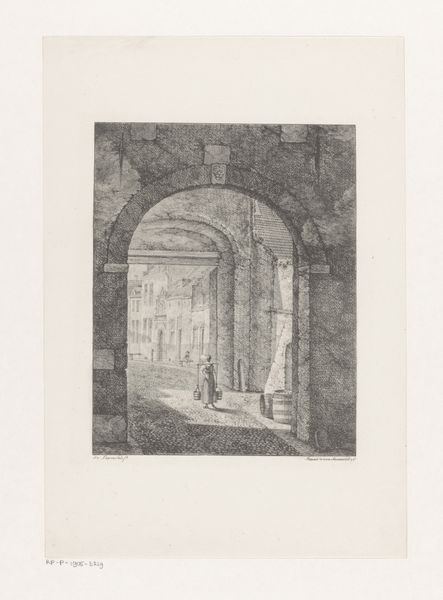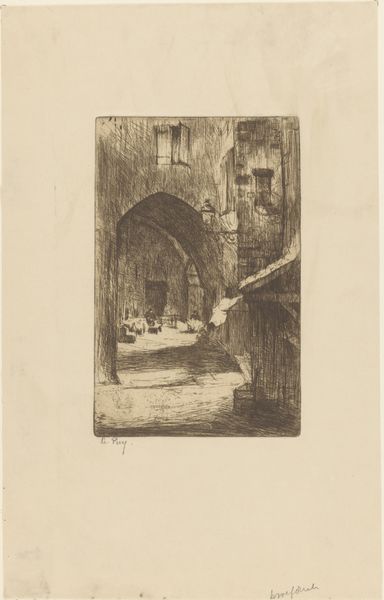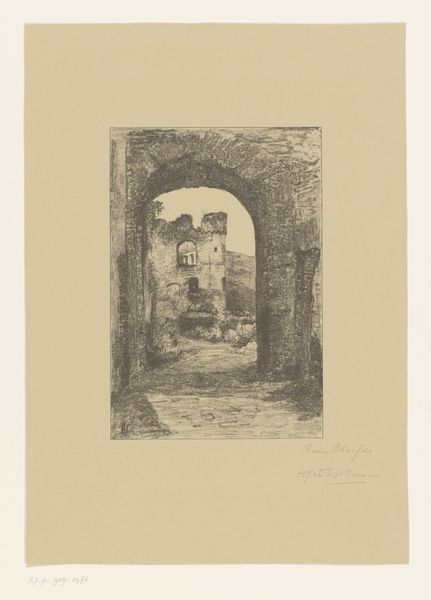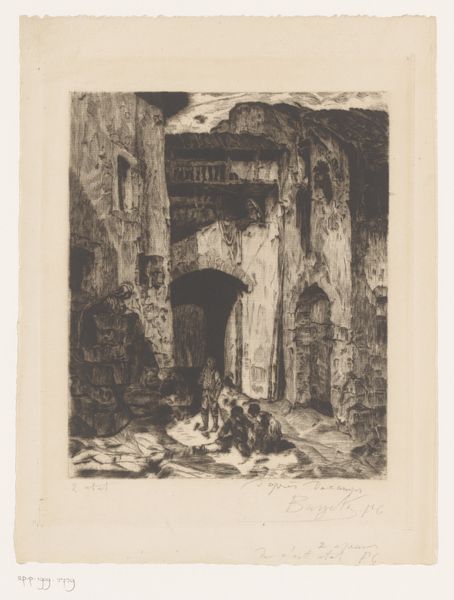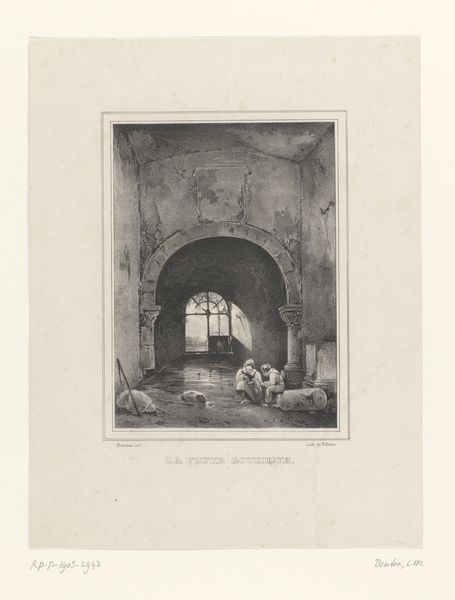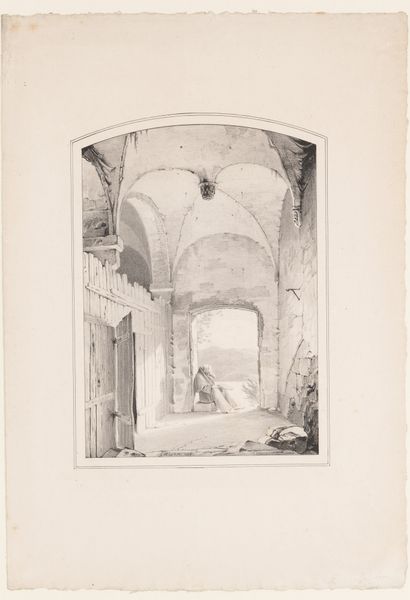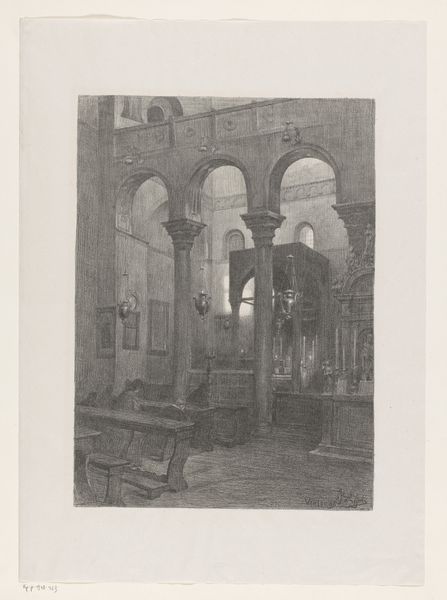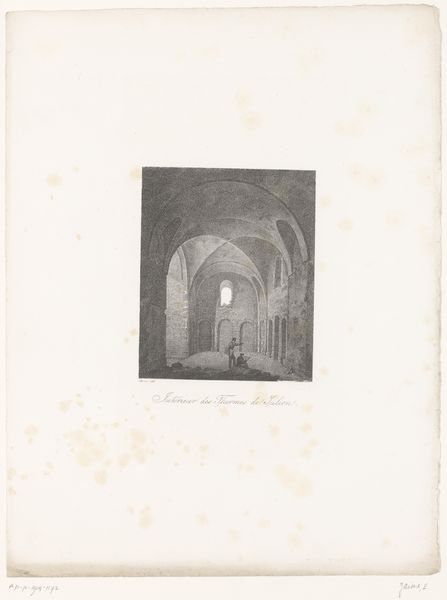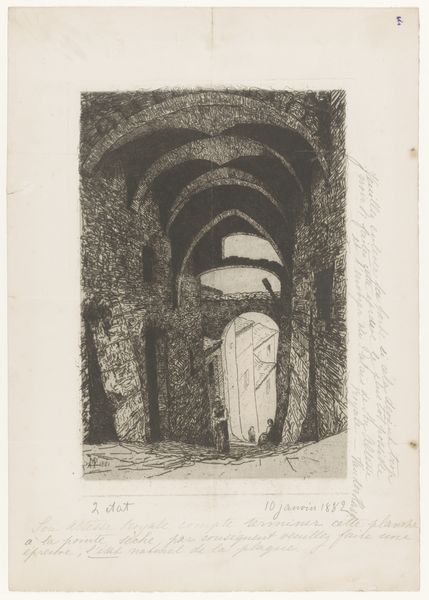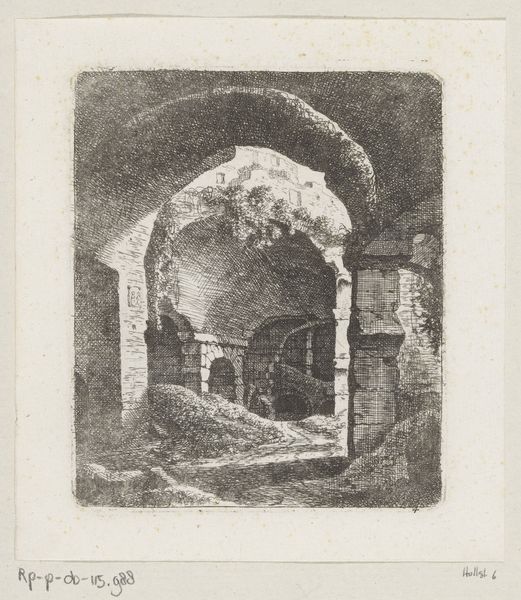
Dimensions: height 523 mm, width 367 mm
Copyright: Rijks Museum: Open Domain
Alexandre Calame made this print of a ruined cloister with etching. It portrays a lone monk, dwarfed by the crumbling architecture. Made in the 19th century, the image carries echoes of the Romantic movement's fascination with ruins and the sublime power of nature. We see the play of light and shadow across the ancient stones. In post-revolutionary Europe, monastic orders had lost political power, and artists of the time often turned to the ruins of religious buildings as a reminder of the past. But the history of art institutions also plays a role here. Prints like these were not just artistic statements. They were commodities, designed to circulate within a growing market for collectible images. The Art world helped create a cultural value around images of decay and the decline of traditional institutions. To truly understand this work, we need to delve into the history of printmaking, the market for images in 19th-century Europe, and the complex relationship between art, religion, and political change.
Comments
No comments
Be the first to comment and join the conversation on the ultimate creative platform.
